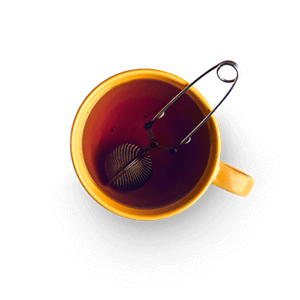Oct . 01, 2024 05:07 Back to list
Optimal Protection Strategies for Fruit Trees Using Effective Tree Bags
Best Fruit Tree Protection Bags Ensuring Healthy Harvests
As gardeners and orchardists strive for thriving fruit trees and bountiful harvests, one of the most effective yet often overlooked tools at their disposal is the fruit tree protection bag. These protective coverings serve multiple vital functions, from safeguarding young fruits from pests and diseases to mitigating damage from adverse weather conditions. This article will explore the best fruit tree protection bags available, their benefits, and how to effectively use them to ensure a successful fruit-bearing season.
Understanding Fruit Tree Protection Bags
Fruit tree protection bags come in various materials, sizes, and designs, tailored to suit different types of fruit trees and the specific threats they face. Most commonly made from breathable, lightweight fabric or paper, these bags create a barrier between the fruit and the external environment. By doing so, they impede access for pests, shield against harsh weather, and reduce the risk of physical damage that can result from birds or falling debris.
Benefits of Using Fruit Tree Protection Bags
1. Pest Control One of the primary advantages of using protection bags is the significant reduction in pest-related damage. Insects such as aphids, fruit flies, and moths can devastate crops if not controlled effectively. By placing bags around developing fruits or on the branches, growers can effectively keep these pests at bay, thereby minimizing the reliance on chemical pesticides.
2. Disease Prevention Fruits are often vulnerable to various diseases, especially when they are in their early stages of development. Protection bags act as a barrier, reducing the chances of fungal infections and other pathogens that can thrive in moist or humid conditions. This proactive measure helps in producing healthier, more robust fruit.
3. Weather Protection Extreme weather conditions, including hail, strong winds, and intense sunlight, can cause significant damage to fruit trees and their produce. Protection bags can provide essential shielding, preventing bruising and sunscald, which can drastically affect both the quantity and quality of the harvest.
4. Improved Quality Bagging fruit can lead to a better quality yield. Fruits grown inside bags tend to be cleaner and less prone to blemishes. This not only enhances their marketability but also ensures that they are more appealing when consumed.
Types of Fruit Tree Protection Bags
When choosing the best bags for fruit tree protection, it’s essential to consider the type of fruit you are growing and the primary threats to your trees. Here are a few popular options
- Mesh Bags Made from lightweight mesh materials, these bags provide excellent airflow while keeping pests out. They are ideal for crops like apples and pears and can be reused for multiple seasons.
best fruit tree protection bags

- Paper Bags Often used for apples and pears, these bags are effective in blocking pests and providing some weather protection
. They are biodegradable, making them an environmentally friendly choice.- Plastic Bags While less breathable than mesh or paper, plastic bags can provide superior protection against harsh weather conditions. These are best used in drier climates where moisture buildup inside the bag is less of a concern.
- Fleece Bags For those growing fruit in cooler climates, fleece bags offer insulation against low temperatures while still allowing light and moisture to penetrate. These bags help to protect the fruit from early frost damage.
How to Use Fruit Tree Protection Bags
Using fruit tree protection bags effectively involves several key steps
1. Timing Place the bags on the fruit trees when the fruit is sufficiently developed but not yet ripe. This generally occurs when the fruit is about the size of a dime.
2. Secure Fastening Ensure the bags are securely fastened around the fruit to prevent pests from entering. For mesh bags, tie them tightly, while paper and fleece bags can often be fastened with clips or ties.
3. Regular Monitoring Periodically check the condition of the bags to ensure they remain intact and effective. Look for signs of deterioration or pest entry and replace them when necessary.
4. Removal Post-Harvest Once the fruit is ready for harvest, carefully remove the bags to minimize any damage to the fruit during the harvesting process.
Conclusion
Incorporating fruit tree protection bags into your gardening or orchard management strategy can significantly enhance the health and quality of your fruit. With diverse options available, it’s important to select the right type of bag for your specific needs while adhering to best practices for their use. By investing in these protection tools, you are not only safeguarding your crops from common threats but also setting the stage for healthier, more productive harvests that can be enjoyed for seasons to come.
-
Plant Pollen Guide: Types, Uses & Artificial Pollination
NewsAug.07,2025
-
High-Viability Male Kiwipollen for Sale | Boost Yield
NewsAug.06,2025
-
Eco Fruit Paper Bags for Peak Freshness | Durability Focused
NewsJul.31,2025
-
Pollen Peach Tree for Pure Pollination and High-Quality Peach Pollen
NewsJul.30,2025
-
Premium Cherry Pollen for Pure Pollination & Different Types
NewsJul.30,2025
-
Artificial Pollination Solutions for Various Plant Pollen Types
NewsJul.29,2025